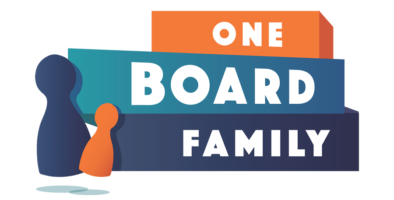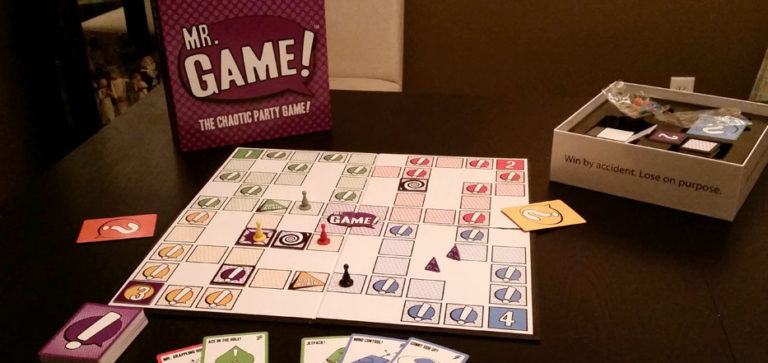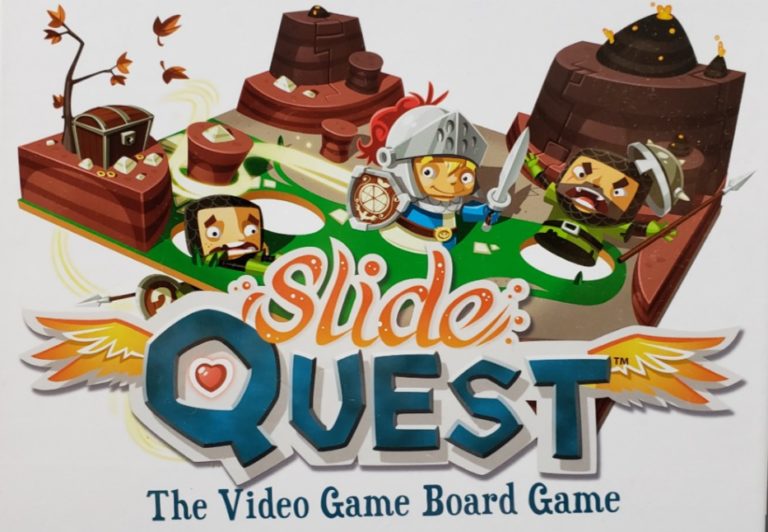The name on the box gives you (almost) everything you need to play the game. Players will have a hand of 5 cards, play 2 cards, play 1 card and then play 1 more card. If you played your hand right, you’ll reap the rewards of numbered cards that will increase your final score.
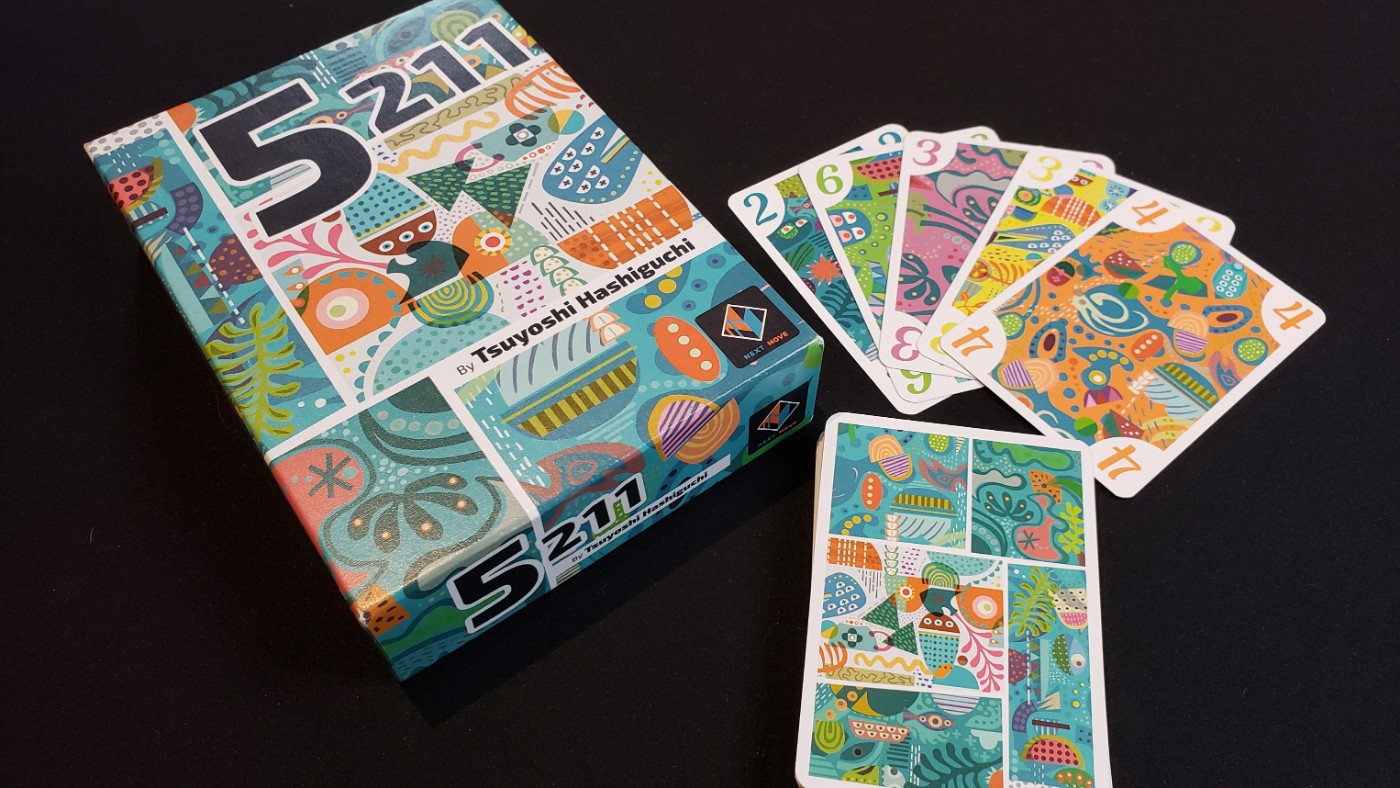
5211 was one of our most played games of 2019 for a couple reasons. The game has a deck of oversized cards with a wild pattern, plays in under 20 minutes and takes about 3 minutes to teach. It became a go-to for our family when we went to a restaurant, had non-gaming friends over or just needed a filler when someone ran to grab a pizza during game night.
Know Your Opponent
The majority of 5211 is trying to predict what your opponents are going to play. As you play the 4 cards in a round, you’ll attempt to read the players around you and the colors of cards they will play. Cards are numbered 2 – 6 and come in 5 different colors. The special “Kododo Dragon” cards are worth a point a piece when the game ends.
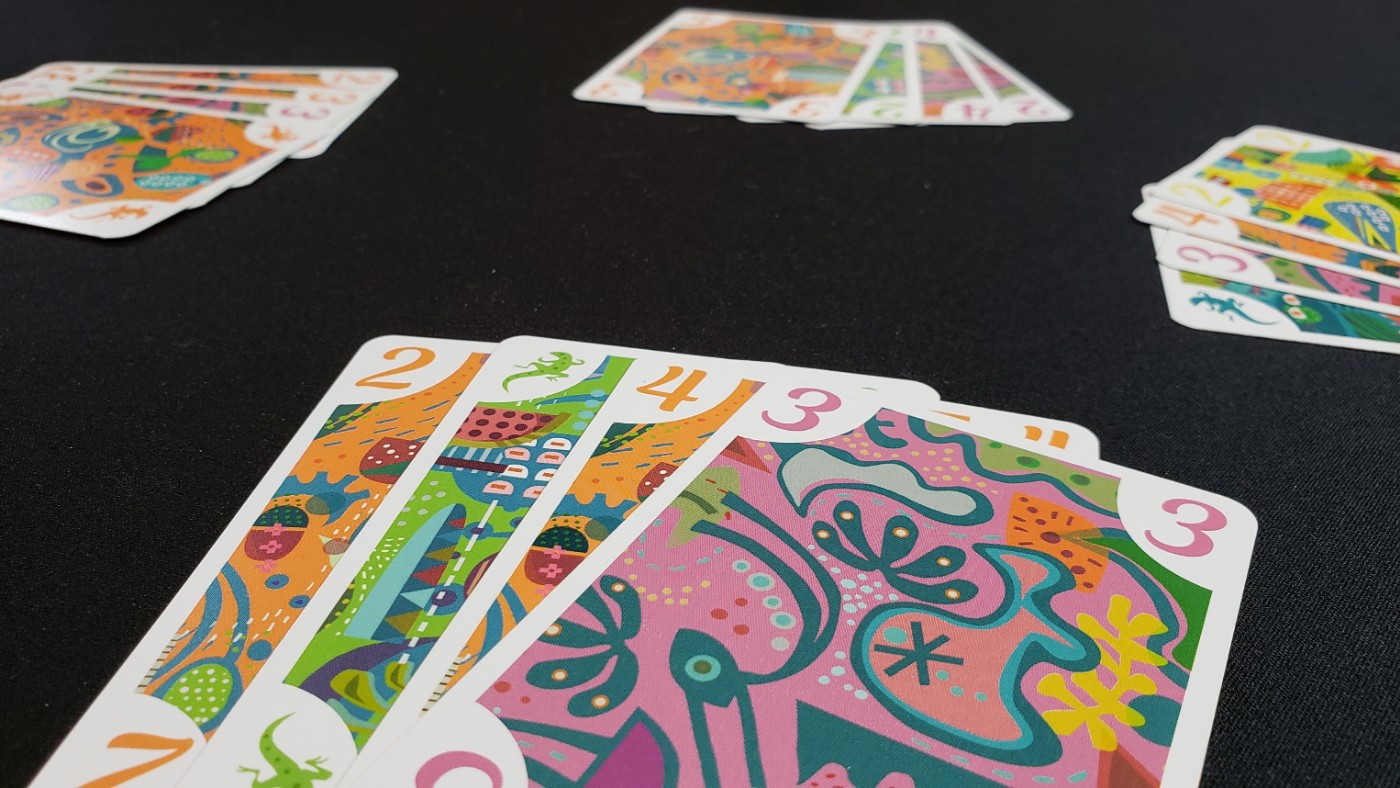
During a round, cards that hold the majority color (ie. orange) wins the round and anyone who played an orange card puts that card in their scoring pile. Players have to watch for a couple things though.
If a color goes over its limit during the round, that card doesn’t score and the next most prevalent color gets to score. If two colors tie with the same number of cards, that also disqualifies it from scoring. But, before any of this is taken into consideration, players count the number of Kododo Dragons on the table. These little lizard icons are sneaky and can really ruin a great turn for a player. If the number of Kododo Dragons is met for your specific player count, those lizard cards win and colors don’t matter at all.
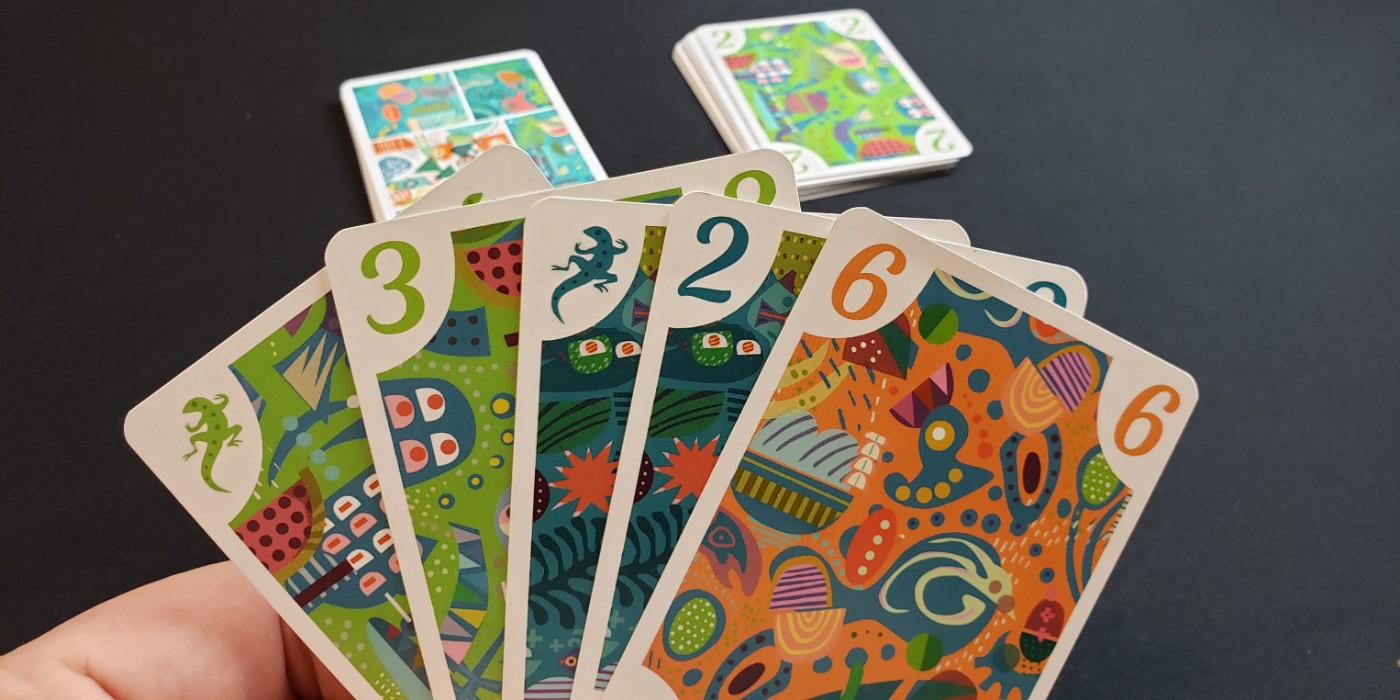
So much of this game is holding and playing just what is needed to tilt a round in your favor. In 5211 there are definitely times where you can have a bad hand of cards. The truth is that this doesn’t matter very much. The gameplay is so quick and a full game is over in under 20 minutes. It’s so easy to forgive a bad hand because players are often asking “Can we play again?”
A Family Filler
5211 is easy to recommend because it’s an excellent filler game that seems to connect with a wide range of people. We’ve taught the game to young and old, gamers and non-gamers. With only 3 or 4 minutes of teaching, players can jump in and play. Usually after the first game, players start to understand strategies like holding back higher values cards, playing cards to push a color over its limit or playing Kododo Dragons at just the right time.
The more you play with the same people, you start to read the way they play. While 5211 isn’t a trick-taking game, it does have that fast-paced, easy to learn, hard to master quality that trick-taking games are known for.
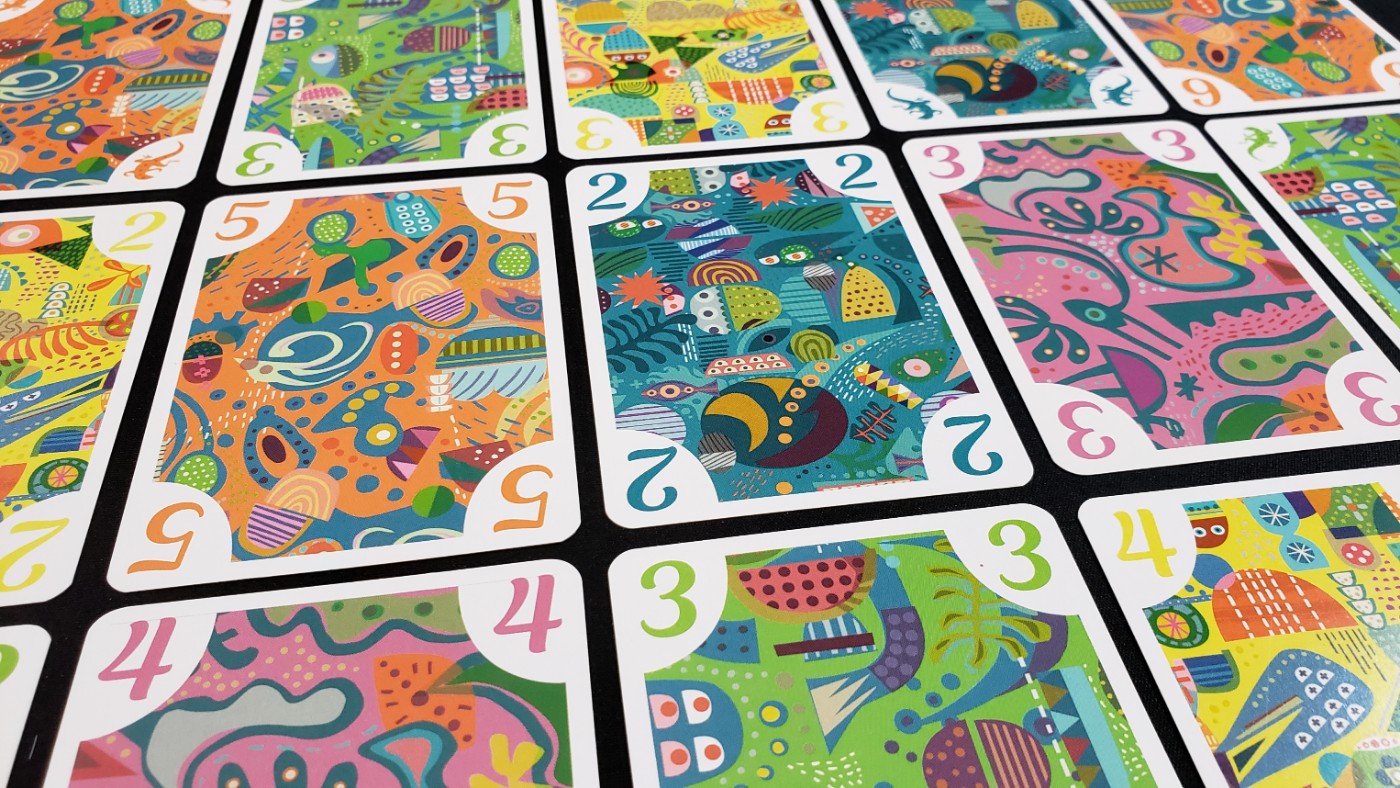
I really love the complex patterns that appear on all the cards. In some way, this pattern actually makes it difficult for the eye to just scan the table and know what’s been played during the round. In a 5 player game I find myself really focusing in and counting to get a better idea of what I should play.
My biggest gripe with 5211 falls squarely on one card in the game. The yellow card has terrible contrast and without excellent lighting, this card is really frustrating to see. The number blends into the white background and I’ve heard at least a dozen people complain that they cannot read the yellow card when it’s just 3 feet away from them across the table. This card doesn’t ruin the game but it’s necessary to mention for anyone with vision issues.
5211 is a fantastic card game to add to any game collection. The game has more tension at the 5 player count and feels more casual with 3 players. The large, oversized cards feel great in your hand. Nothing beats seeing players face drop when they realize the person next to them caused the color they played to go over the limit, leaving them with nothing to score.
You can pick up a copy of 5211 at your local game store or buy it online today through Amazon.
Highs
- Supports up to 5 players and feels different at each player count
- Fast gameplay that is easy to teach
- Every round keeps players guessing
- Feels like a classic family card game
Lows
- The contrast on the yellow cards are terrible
